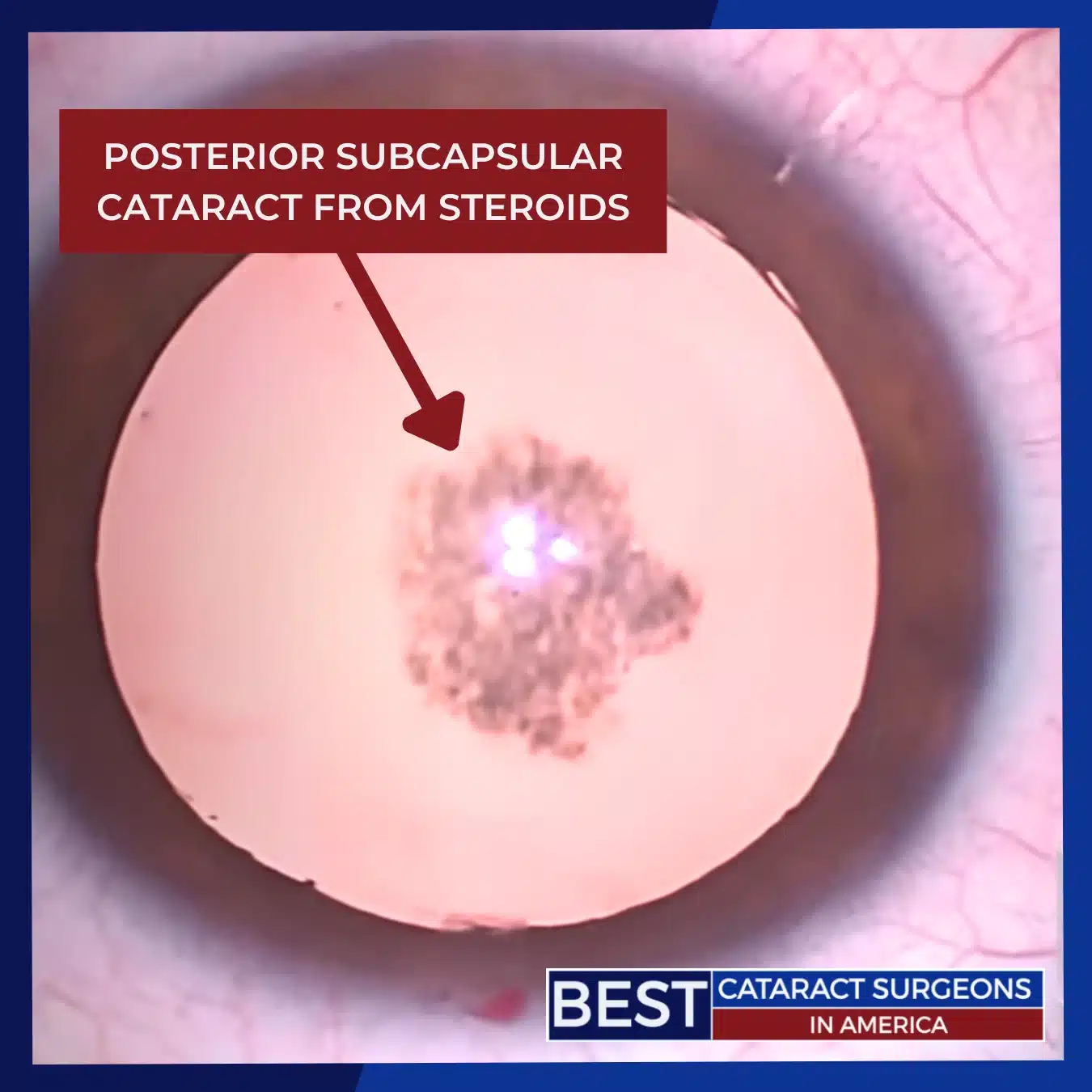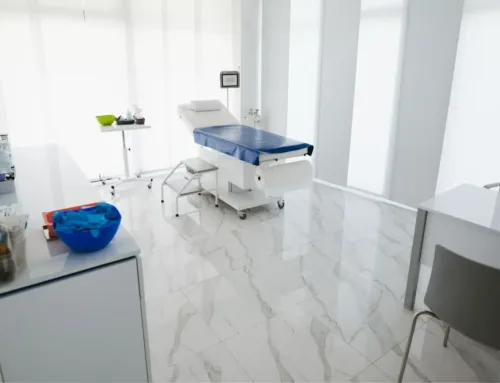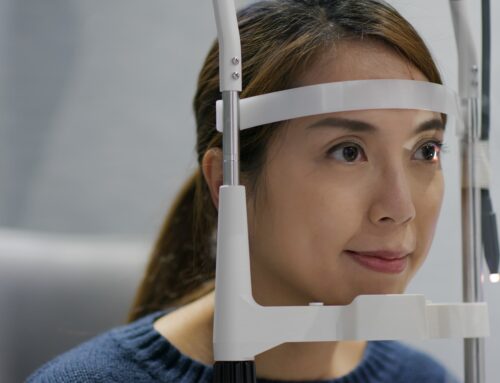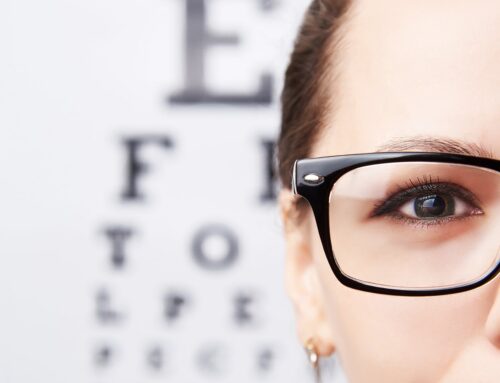This article explores the many different causes of cataracts. We’ll discuss how lifestyle choices and environmental factors contribute to the development of cataracts, offering insights into prevention and risk reduction. There are many types of cataracts, each developing for a different reason. Learn more about safeguarding your eye health by understanding these key factors.
What Causes Cataracts?
Cataracts form when proteins in the eye’s natural lens degrade over time, causing the lens to become cloudy and impair vision. This process occurs naturally with aging, and also can be accelerated by several factors such as UV exposure, diabetes, certain medications like corticosteroids, and physical eye trauma. Smoking and previous eye surgeries also contribute to the risk. Understanding these causes at the cellular level is crucial for managing and preventing cataracts.
Symptoms of Cataracts
Cataracts grow slowly over time and patients sometimes do not notice their effects until they begin impacting their activities. Common symptoms of cataracts include cloudy vision, halos around lights, dark or dim vision, and poor night vision. Frequent changes in glasses occur as well as increased near vision.
There Are Many Different Causes of Cataracts
Let’s review the causes of cataracts. There are common causes, and there are also quite rare causes. In the following sections we’ll go over the major different things that can cause cataracts
Aging Is The Most Common Cause Of Cataracts
By far the most common reason for cataract development is due to advancing age. This occurs because the proteins within the lens continue to divide and grow throughout life within a confined space. After decades of growth, the lens begins to thicken, a process called nuclear sclerosis. These lens proteins also discolor leading to changes in the way light and color are filtered and viewed. Although not completely understood, there are some factors of daily life that can speed up the development of cataracts. These factors include spending time in bright sunlight without sunglasses, smoking, and an unhealthy diet.
Medications Can Cause Cataracts
The most common medication that causes cataracts are oral, intravenous, and inhaled steroids. This type of cataract typically forms within 5-10 years of medication use and is most commonly termed a posterior subcapsular cataract. Although these cataracts can be quite visually disturbing, they are straightforward to remove, and visual recovery is quick.
The type of steroids that cause these cataracts are called “corticosteroids”. They are different from anabolic steroids that are used for athletic performance.
There are other kinds of medications that can cause cataracts or have been linked to them. Let’s review a few medications that have been associated with cataracts:
- Phenothiazines: Causes deposits on the anterior lens capsule which are generally visually insignificant
- Miotics: There is a correlation of cataracts with eye drops such as pilocarpine after years of use
- Amiodarone: Can cause stellate pigment deposits. Only rarely are visually significant
- Statins: Studies in dogs have shown association with cataracts, however, this has not been observed in humans.

Trauma Can Cause Early Cataracts
Blunt forces to the eye or surrounding face can cause a special type of traumatic cataract called a “stellate cataract”. As the proteins within the natural lens undergo extreme pressure and movement they begin to cloud and swell. Over time the lens becomes pressurized and requires special considerations during surgery as well as a higher risk of complications.
Penetrating trauma can also result in early cataracts. If something sharp enters the eye and touches, or tears, the capsule which supports the natural lens, a cataract will develop. These types of cataracts when the support structure has been damaged can often be some of the most challenging and complex cases.
Other types of injuries to the eye can also result in early cataracts. These include chemical injuries, radiation exposure, intraocular foreign bodies, and electrical injuries.
Prior Intraocular Surgery Can Cause Cataracts
Procedures inside the eye such as retinal surgery, specifically vitrectomy, can disturb the delicate lens and cause it to cloud.
When patients require vitrectomy for conditions like epiretinal membranes or retinal detachments it is quite common for a cataract to develop within the first 12 months after surgery.
Diabetes Is A Common Cause of Cataracts
The list of medical conditions that can cause a cataract is extensive, but the most common medical condition that causes cataracts is diabetes. As the bloodstream takes on more glucose, the lens begins to change its energy demands. This leads to swelling within the lens and changes to its shape and size, leading to cataract development. This type of cataract is termed a “snowflake” cataract.
Diabetes is a common cause of cataracts, particularly in patients with poorly controlled diabetes. When diabetes is poorly controlled, and blood glucose is very high, the onset of cataract is accelerated. The best thing patients can do to prevent the early onset of cataracts from diabetes is to control their blood sugar well.
Metabolic Disorders Can Result in Early Cataracts
There are a variety of metabolic disorders that can result in early cataracts.
Metabolism refers to the processes the body uses to break down different molecules inside the body. When there are metabolic disorders, certain molecules cannot be broken down and they can build-up resulting in disorders.
For example, in the condition called “galactosemia”, the body is unable to convert galactose to glucose. As a result, galactose accumulates in the body causing a variety of problems, including cataract.
Congenital Cataracts
In rare circumstances an infant can be born with cataracts, these are called congenital cataracts. Any child with cataracts needs a full comprehensive exam with a pediatric ophthalmologist to rule out dangerous metabolic diseases, retinal problems, and rare malignancies.
Although congenital cataracts are rare, there are many possible causes. See the list below.
Genetic
Disorders
Genetic Disorders
Down Syndrome
Lowe Syndrome
Hallermann-Streiff Syndrome
Marfan Syndrome
Alport Syndrome
Myotonic Dystrophy
Fabry Disease
Conradi Syndrome
Maternal
Infection
Maternal Infection
Rubella
Cytomegalovirus
Varicella
Syphillis
Toxoplasmosis
Congenital Ocular
Abnormalities
Congenital Ocular Abnormalities
Persistent Fetal Vasculaturs
Tumors
Aniridia
Anterior Segment Dysgenesis
Does smoking cause cataracts?
Yes. According to the FDA’s website, smoking cigarettes can, in fact, cause cataracts. The United States Department of Health and Human Services published a report in 2004 titled “The Health Consequences of Smoking” which the FDA cites as their reference.
How Are Cataracts Treated?
Regardless of the cause of cataracts, they are all treated basically the same, with surgery. Typically, cataract surgery in children is performed by pediatric ophthalmologists, while cataracts in adults are performed by adult ophthalmologists. Children have special considerations, often related to anesthesia, that require a pediatric specialist, often with a team of pediatric anesthesia providers.
In general, the cataract is surgically removed, and a lens implant is put in its place.
Summary
Although there are many ways that cataracts can develop, the surgical treatment of cataracts is straightforward with a high success rate. Patients can look forward to better vision and decreased reliance on their glasses and contacts with an experienced surgeon offering the latest options for cataract surgery with intraocular lens replacement.











